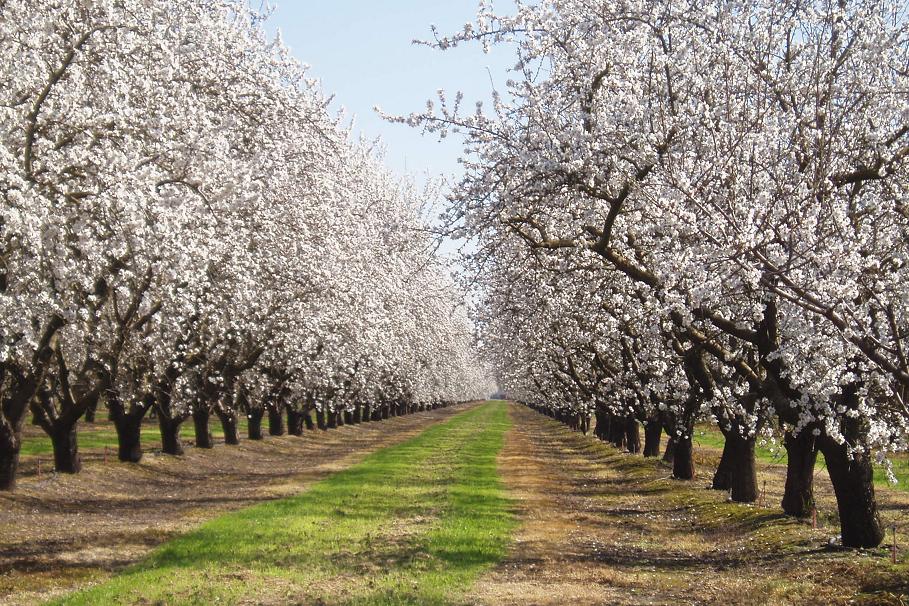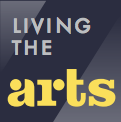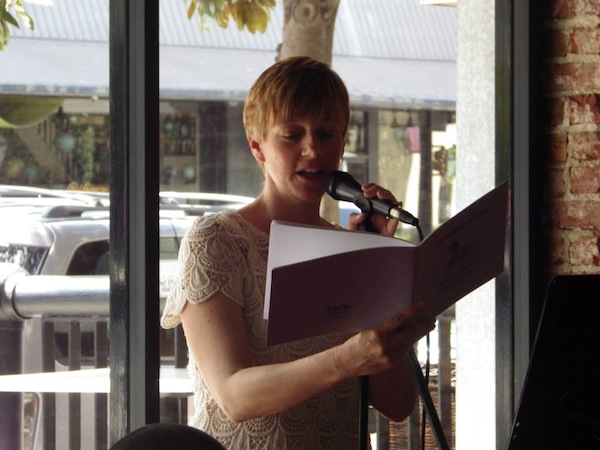
Arable
The land around coaxes out
almonds, apricots, walnuts.
At 3 a.m., the call to irrigate.
—from “An Alphabet for a Mid-Sized City”
I am not from here, not from the Central Valley with its coded languages of waterways and seasons and orchards, but I’ll give away the end of the story and say that this is where I’ve found a home.

I came here for a teaching job in 1991, just out of college, and for the first few years living in the Modesto area, I just wanted to get out and move to a place with big-city life and an ocean.
But then I met Stella with her dark humor and Tom with his joy in life; and I met and married my husband, a man whose generosity and kindness are gifts, certainly to me, but also to his high school students. Both my husband and I moved around a great deal growing up—me from New York City to Northern California to the deserts of Arizona and then to Southern California, and Joe from the U.S. to South Africa to the Netherlands and then to Boston. So putting down roots in one place was a hope we shared. Now, our daughter is a Modesto native who has attended the same school for her entire young life. I have grown into this place, and this place has grown into me.
A great part of that growing and building a sense of belonging is that here I found my way as a poet within a community of poets—willing to work together not only to provide feedback on one another’s poetry, but to get Modesto and Stanislaus County on the literary map.
Your first impression of the Central Valley may begin where I began, with agriculture (“almonds, apricots, walnuts,”) and yes, that is deeply ingrained, but that isn’t all we are. Nor are Stanislaus County and Modesto just the high-profile crimes you may hear about in the press (the Laci Peterson murder, the murders of three Yosemite tourists). Modesto comes up regularly on every worst-of list you can imagine: crime, education levels, health, car-theft, places to live. But these are just points of departure, and life on our turf is more richly textured than that, more intimate, more mundane, more magical, and more creative.
Forb
Wild mustard grows in the ditches.
Green stem, yellow flower,
the bitter scent forecasts this ache or that.Gimcracks
Lined up in the windows of that house
on the corner, each shiny object shooting back
sunlight, enough to blind the trespasser.Interlocution
“It sure is hot today.”
“I love the heat.”
“Jeez mija, you don’t know what you love.”
By the mid-1990s, I was getting established in my teaching career, and I applied to and was accepted to a creative writing masters program at the University of San Francisco, where I could go to classes one night a week after teaching junior high English all day. At about the same time, I began to meet regularly with a group of other teacher-poets here in town. The Licensed Fools, as we eventually called ourselves, became not only a community of friends but, for me, a community of people to whom I could turn for writing help, something essential for every writer out there.
We began hearing about more writers and more writing groups. Literary journals—hardpan, The Song of the San Joaquin, Snail Mail Review—were founded to showcase Central Valley poetry alongside work from around the country. The energetic Sam Pierstorff established the Quercus Review Press at Modesto Junior College after publishing a regular journal for many years and creating a national poetry competition. And the 4More group of poets has established a yearly publication and reading, the proceeds of which go to a local charity.
Poetry readings sprang up: some at local art galleries, some at theaters and restaurants. Modesto became a mecca for slam poetry, the energetic, spoken-word, performance-based poetry that appeals especially to young people. The IllList Poetry Slam, also established by Sam, packs the State Theater to the rafters every December and nourishes a whole group of people who celebrate the power poetry has to transform ordinary experience into art.
As I started getting published and doing readings in the Central Valley and Bay Area in the mid-2000s, I began to feel as if I had a responsibility to help promote the poetry of other writers in Stanislaus County and beyond. In June 2009, with the help of Hanibal and Evin Yadegar, the owners of Modesto’s Barkin’ Dog Grill, I started the 2nd Tuesday Poetry Series in which a local poet would be paired with a poet from the Bay Area, Sacramento, or beyond.
And because the printed word brings a kind of weight and permanence to the point we want to make about our area being much more than one big flat agricultural space without culture or art, a group of us organized a poetry anthology of Modesto-area writers. The resulting book includes the work of 51 poets with a short discussion from each poet on how his or her work has been influenced by our landscape—and how we are more than the orchards, grasslands, and rivers that we love. With photographs from local photographer Doug Holcomb, More Than Soil, More Than Sky was published in 2011 by Quercus Review Press.
Feeling a growing glow of enthusiasm and local pride in the poetic community, I called a meeting of writers in 2013 to form the Modesto-Stanislaus Poetry Center to “promote poetry throughout Stanislaus County and promote Stanislaus Country through poetry.” In the past 18 months, the MoSt Poetry Center (as it is known) has held readings at senior centers and poetry workshops at schools and for youth groups; started a new reading series at the Carnegie Arts Center in Turlock; co-sponsored community events involving poetry; and expanded a poetry festival initiated by Ed Bearden. It also published The Stanislaus Poem, which is composed of quatrains submitted by school children and other community members that celebrate something they find lovely—a landscape, a person, a memory—in their lives here.
Longanimity
The lights start blinking just as you pull up
to the grade. The train has not yet appeared.
You open your window to hear it coming. You wait.Reef
Under our feet, beneath the compacted soils,
encased in a vanished inland sea, are fossils
that won’t be discovered for possibly ever.Tree
The original’s in Westside Park, but now these trees
are all of ours: Fraxinus velutina glabra ‘Modesto’.
Sure, in spring the new leaves fall, but more always grow back.
As the current poet laureate of the City of Modesto, I write poems as the city and as civic groups need them—for the openings of baseball fields and for Earth Day, to celebrate a beloved community member or for the refurbishment of a beloved landmark. That there is such an office in our town—and that I’m the latest inheritor of a title carried by five poets before me—is a testament to the recognition that poetry can often say what plain prose cannot, that poetry can capture the emotion of an occasion in a succinct and shining way, that it can elevate an event and make it something special.
X
Marks the spot where I ended up staying even after
declaring loudly that I did not want to end up here.
X marks the spot that’s somehow become home.Yes
So, because this became home, I began to say yes.
I am from here, yes. I like it here, yes. Not everything
Is perfect, yes, but then nowhere is.
The full “Alphabet for a Mid-Sized City” can be found here.






Send A Letter To the Editors